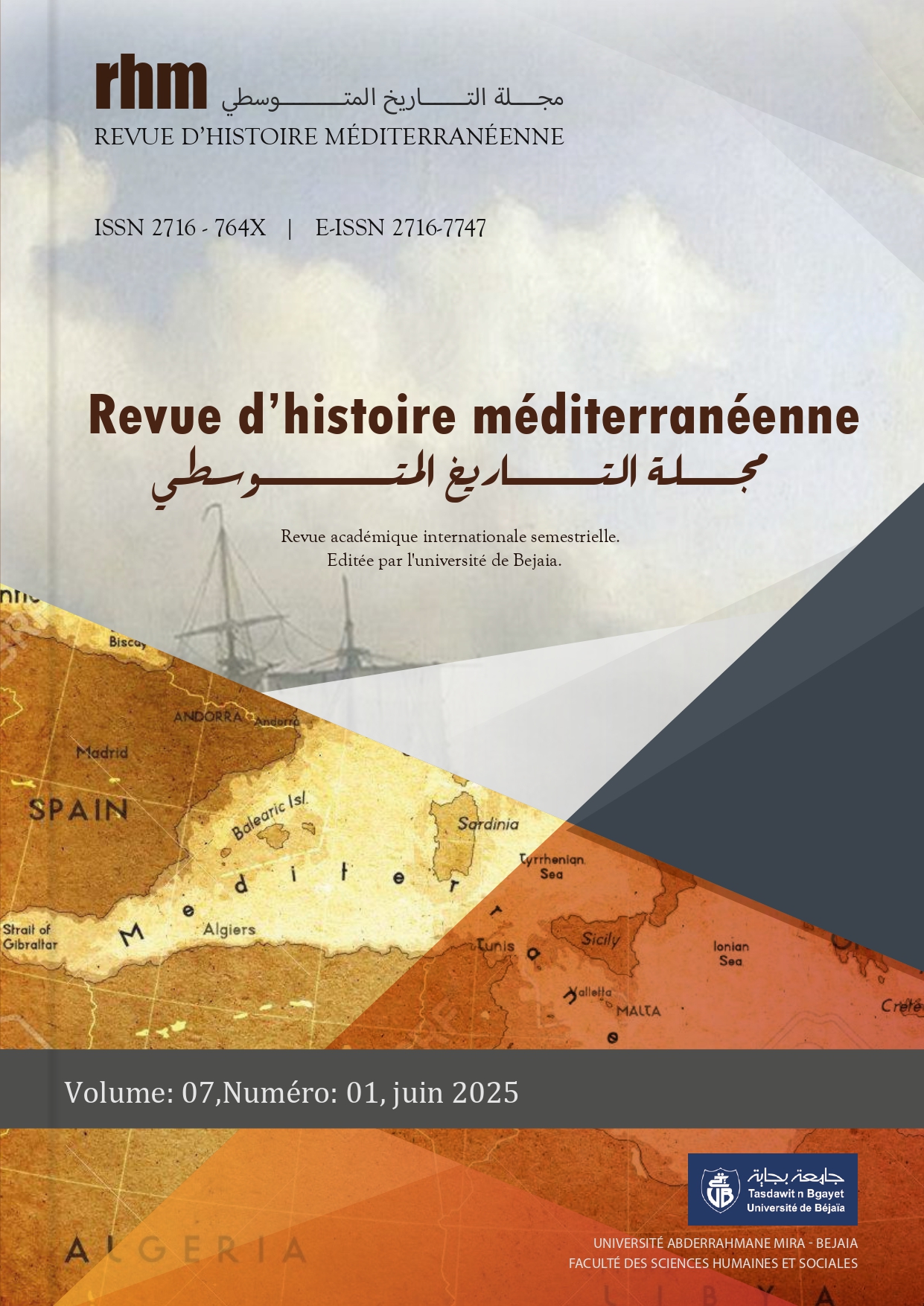Les relations entre les Européens et les Algériens musulmans à Constantine (1837-1934)
The relationship between Europeans and Muslim Algerians in Constantine (1837-1934)
Abstract
In 1837, the city of Constantine was taken by the French army after a deadly full-scale siege. The population was going to endure the agonies of harsh colonization. A European population settled in the city, in a neighborhood separate from the indigenous people. Gradually, other neighborhoods intended for Europeans emerged. That development of European emigration was naturally followed by major economic activity in their neighborhoods. Meanwhile, Muslim Algerians lived at a slower pace in overcrowded and difficult living conditions, maintaining the same lifestyles they had followed for centuries. Interaction between the two communities was limited; men and women crossed paths in markets and sometimes in the workplace. In general, these ties were weak. The causes can be traced to the colonial administration and the colonists themselves. The latter were often arrogant, viewing the indigenous peoples as enemies to be avoided or marginalized. This mindset of domination was deeply embedded in their culture. The colonial regime encouraged this separation between the two groups through discriminatory laws and its leaning toward colonists in matters of financing and economic development in general. Discrimination also extended to the political sphere, particularly in terms of representation in regional assemblies, as indicated in the 1919 law, and in the question of citizenship, as advocated by the Blum-Violette project. This mistrust could escalate into open confrontations, as was the case in 1934 between Muslims and Jews in Constantine. It is also worth noting the mistrust felt by the indigenous population, exacerbated by the difficulties of daily life, in stark contrast to the standard of living enjoyed by the Europeans. As the years passed, the situation remained unchanged. This lack of contact between the two communities persisted until the country gained independence. The primary research question addressed in this study is : What economic, cultural, political, and social ties were established between Europeans and the indigenous population in Constantine??
The objective of this study is to understand the nature of the relations between two populations who, living under unequal legal and political conditions, were radically different from one another, at a time when one lived under a harsh colonial regime. It is based on a detailed archival report written by the Association of Bachaghas, Aghas, and Caids of the Constantine Department, a document on the 1934 massacre, and other contemporary printed sources, including writings by Governor Maurice Violette. In order to explore the topic, a deliberate decision was made to examine the ties between the two communities through several key elements: residential space, the issue of discrimination, European influence, indigenous discontent, and violence, using the 1934 events in Constantine as a case study. As a result of the research, it is important to note that the causes preventing good relations between the two communities can be traced to the nature of the colonial regime, the economic and political disparities between the two groups, and the colonists’ mentality, which was rooted in a sense of dominance over the indigenous population.










